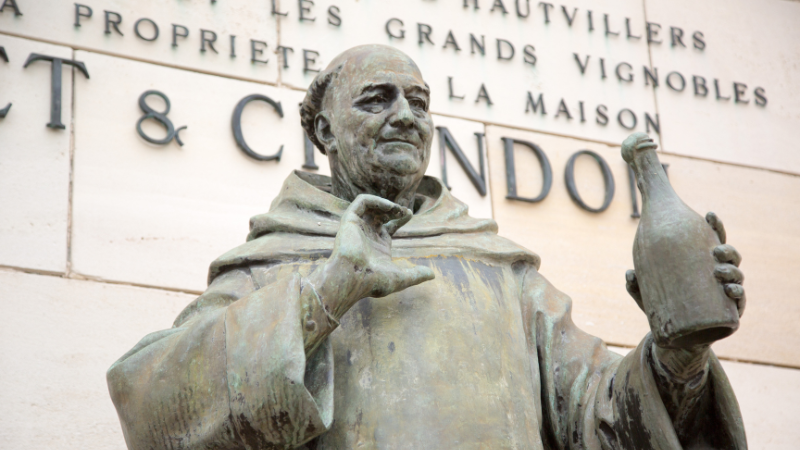“I am drinking stars!” – Dom Pérignon
(Though there’s some debate over whether he actually said this, it’s often attributed to him and reflects the joy and wonder associated with Champagne.)
Though he’s best known today for being the namesake of a famous fancy Champagne brand, Dom Pérignon was once a humble Benedictine monk living in 17th-century France. Pérignon was born in 1638 in France’s Champagne region, and though some sources erroneously credit him with inventing sparkling wine, he undoubtedly helped improve its production methods while living at the Hautvillers Abbey. Pérignon made his way to the monastery in 1668, and at the time, Champagne’s wines were deemed inferior in color, quality, and flavor to products from the more popular wine regions of Burgundy and Bordeaux.
Pérignon worked to improve the region’s winemaking reputation — he invented a press to make clear wine from dark grapes, and reintroduced corks as reliable seals for bottles. Ultimately, however, it was Pérignon’s work on a process known as “méthode champenoise” (roughly translating to “the Champagne method”) that solidified his legend. He sought to better understand how the region’s cold weather impacted wine, and how the buildup of carbon dioxide caused certain bottles to explode. Pérignon went on to produce fizzy wines that the French were initially less fond of, but proved to be extremely popular with his English customers.




